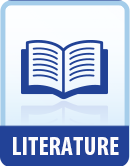
|
| Name: _________________________ | Period: ___________________ |
This test consists of 15 multiple choice questions and 5 short answer questions.
Multiple Choice Questions
1. In line 4, "Half sunk a shattered visage lies," what does the word "visage" refer to?
(a) A piece of armor.
(b) A face.
(c) An eye.
(d) A weapon.
2. What kind of landscape has the traveler been traveling through?
(a) Desert.
(b) Mountains.
(c) Swampland.
(d) Savannah.
3. To whom does Ozymandias address his remarks?
(a) His subjects.
(b) Other kings.
(c) His army.
(d) Future civilizations.
4. What is the rhyme scheme of "Ozymandias"?
(a) ABAB BCBC CDCD EF.
(b) ABAB CDCD EFEF GG.
(c) ABAB ACDC EDEF EF.
(d) ABAB ACAC ADAD EE.
5. In line 1, what word does the speaker use to describe the land where the traveler has been?
(a) "Far-off."
(b) "Foreign."
(c) "Antique."
(d) "Mystic."
6. Whose "passions" are referred to in line 6, "Tell that its sculptor well those passions read"?
(a) The traveler's.
(b) The sculptor's.
(c) Ozymandias's.
(d) The speaker's.
7. What technique is used in line 8, "The hand that mocked them, and the heart that fed"?
(a) Paradox.
(b) Chiasmus.
(c) Parallelism.
(d) Imagery.
8. How many voices are heard in "Ozymandias"?
(a) 3.
(b) 1.
(c) 4.
(d) 2.
9. What does Ozymandias's quote imply should be standing around the statue?
(a) The graves of enemy kings.
(b) Military weaponry.
(c) Monuments and buildings.
(d) Gold and treasure.
10. Who is the author of "Ozymandias"?
(a) Percy Bysshe Shelley.
(b) Lord Byron.
(c) William Blake.
(d) William Wordsworth.
11. Which lines contain caesuras?
(a) Lines 11 and 12.
(b) Lines 8 and 9.
(c) Lines 2 and 3.
(d) Lines 5 and 6.
12. What part of the statue's face does the traveler describe?
(a) The eyes.
(b) The jaw.
(c) The brow.
(d) The mouth.
13. What is the antecedent of the word "them" in line 8, "The hand that mocked them"?
(a) Passions.
(b) Sculptor.
(c) Lifeless things.
(d) Visage.
14. Whose hand is being referred to in line 8, "The hand that mocked them"?
(a) Ozymandias's.
(b) Ozymandias's subjects.
(c) The sculptor's.
(d) Rival kings.
15. What is the likely purpose of capitalizing "Works" (line 11) and "Wreck" (line 13)?
(a) To draw the reader's attention to the consonant rhyme.
(b) To stress that these are one and the same thing.
(c) To draw the reader's attention to the alliteration in these lines.
(d) To convey a sense of Ozymandias's hubris.
Short Answer Questions
1. In line 4, "Half sunk a shattered visage lies," what techniques are employed?
2. What title does Ozymandias give himself in the statue's inscription?
3. What is the form of "Ozymandias"?
4. In lines 6 and 7, "Tell that its sculptor well those passions read/ Which yet survive, stamped on these lifeless things," what it is that is "stamped," on the "lifeless things"?
5. What part of the statue is still standing when the traveler sees it?
|
This section contains 427 words (approx. 2 pages at 300 words per page) |

|




